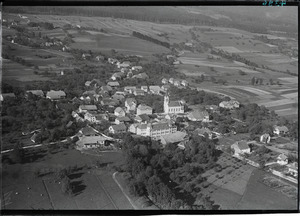Bettlach, Switzerland facts for kids
Quick facts for kids
Bettlach
|
||
|---|---|---|

Bettlach
|
||
|
||
| Country | Switzerland | |
| Canton | Solothurn | |
| District | Lebern | |
| Area | ||
| • Total | 12.19 km2 (4.71 sq mi) | |
| Elevation | 479 m (1,572 ft) | |
| Population
(Dec 2020 )
|
||
| • Total | 4,953 | |
| • Density | 406.32/km2 (1,052.4/sq mi) | |
| Postal code |
2544
|
|
| Surrounded by | Arch (BE), Grenchen, Leuzigen (BE), Selzach | |
| Twin towns | Lütschental (Switzerland) | |
Bettlach is a small town, also called a municipality, located in Switzerland. It's part of the Lebern district in the canton of Solothurn. Bettlach is known for its beautiful natural surroundings, stretching from the Aare river up to the Jura Mountains.
Contents
What is the History of Bettlach?
Bettlach is an old settlement with a long history. It was first mentioned in official records way back in 1181. Back then, it was called Betelacho. Later, in 1279, its name changed slightly to Bettelage, and by 1329, it was known as Betlach, which is very close to its current name.
Where is Bettlach Located?
Bettlach covers an area of about 12.21 square kilometers (about 4.7 square miles). A large part of this land, almost half (46.4%), is used for farming. This means there are many fields and pastures.
Another big part of Bettlach, about 37.6%, is covered by forests. The rest of the land includes buildings, roads, and a small amount of rivers or lakes. There's also a tiny bit of land that isn't used for anything, like rocky areas.
The town is located in the Lebern district. It stretches from the Aare river, which is a flowing body of water, all the way to the foot of the Jura Mountains.
What is the Bettlach Coat of Arms?
A coat of arms is like a special symbol or emblem for a town or family. Bettlach has its own unique coat of arms. It is described as Argent a Cross pattee couped fitche Gules. This means it shows a red cross on a silver (or white) background. The cross has arms that widen at the ends, and the bottom arm is pointed.
Who Lives in Bettlach?
Bettlach has a population of around 4,800 people. In 2008, about 15.6% of the people living in Bettlach were from other countries. Over the past ten years (from 1999 to 2009), the number of people living in Bettlach grew by about 2.8%.
Most people in Bettlach speak German, which is about 88.3% of the population. Other languages spoken include Italian (3.2%) and French (1.7%).
In 2008, the population was almost evenly split between males (51.0%) and females (49.0%). Many people living in Bettlach were also born there or in the same canton. About 15.2% of the population was born outside of Switzerland.
The age groups in Bettlach show a good mix of people. In 2000, about 7.4% of the population were young children (0-6 years old), and 15.8% were teenagers (7-19 years old). The largest group, about 31.8%, were adults between 25 and 44 years old. There are also many older adults and seniors living in Bettlach.
Most households in Bettlach have about 2.3 people on average. There are many single-person households, but also many families with children.
What is the Economy of Bettlach Like?
In 2010, the unemployment rate in Bettlach was 3.9%, which means most people had jobs. The town has different types of jobs:
- Primary Sector: This involves jobs related to nature, like farming. In 2008, about 53 people worked in this area, mostly in agriculture.
- Secondary Sector: This includes jobs in manufacturing (making things) and construction (building things). A large number of people, about 1,557, worked in this sector. Most of these jobs were in manufacturing.
- Tertiary Sector: This covers jobs that provide services, like working in shops, restaurants, or healthcare. About 579 people worked in this sector.
Many people who live in Bettlach travel to other towns for work. In 2000, about 1,859 people left Bettlach to work elsewhere, while 1,075 people came into Bettlach for their jobs. Most people (60.5%) used a private car to get to work, while 13.4% used public transportation.
What Religions are Practiced in Bettlach?
In 2000, the main religions in Bettlach were Roman Catholic (41.9%) and Swiss Reformed Church (34.8%). There were also smaller groups of people who belonged to other Christian churches, the Eastern Orthodox Church, or the Christian Catholic Church of Switzerland.
Some people in Bettlach are also Islamic (4.77%). There are also small communities of Buddhists and Hindus. About 11.12% of the population did not belong to any church or religion.
How is Education in Bettlach?
Education is important in Bettlach. Many adults have completed upper secondary education, which is like high school. About 11.1% of the population has gone on to higher education, like university or a specialized college.
During the 2010-2011 school year, there were 462 students in Bettlach's schools.
- Kindergarten: Young children can attend two years of non-mandatory kindergarten. There were 82 children in kindergarten during that year.
- Primary School: Students attend six years of primary school. Bettlach had 291 students in primary school, with a few in special classes.
- Secondary School: After primary school, students go to lower secondary school for three years. There were 82 students in lower secondary school in Bettlach.
While some students from other towns come to Bettlach for school, many students from Bettlach also attend schools outside the municipality.
Images for kids
See also
 In Spanish: Bettlach (Soleura) para niños
In Spanish: Bettlach (Soleura) para niños







